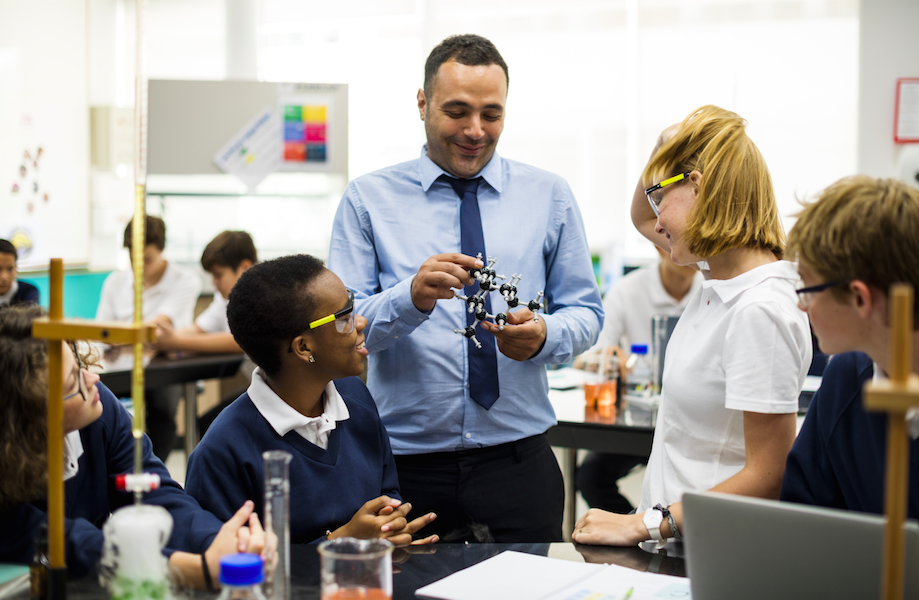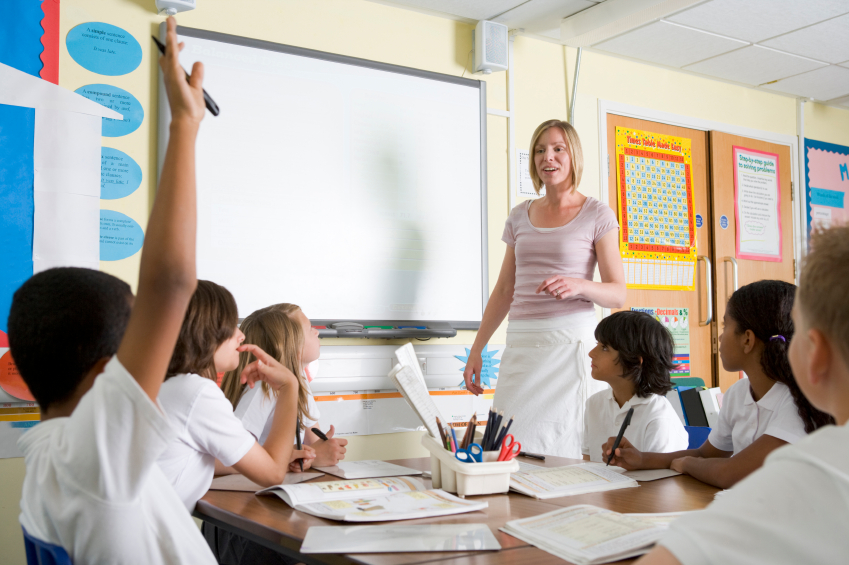How YOU the Science Teacher Excel at School (And Become a Senior Leader)
There’s no teacher quite like a science teacher. These are the educators who constantly analyse their performance and try to improve. You might even call it their biggest use of the scientific method!

Of course, every good scientist knows that collaboration is the key to improvement. That’s why we put together an awesome guide to how even the best science teachers can become better at their job.
Ready to take your classroom and teaching skills to the very next level? Then put on your safety goggles, as the experiment is about to begin.
Lifelong Learner
Our first tip is to embrace a life of mentorship. The best teachers never stop being students: instead, they are lifelong learners who constantly thirst for more knowledge. That’s why you need to seek out a mentor at your school that can help you continue to learn and to grow.
After you have secured your own mentor, make sure you take the time to become a personal mentor to some of your students. Once they feel their teacher is understanding and accessible, you will be absolutely amazed at how quickly their studies will start to accelerate. Just make sure you have the energy to keep up with how your pupils are now excelling.
Make It Visual
Since you dedicated your life to science, you’re obviously passionate about the subject. But one of the reasons that your students aren’t as passionate about the subject is because they aren’t passionate about simply reading the textbook.
For visual learners, the only way to really reach them is to make science visual. Fortunately, this is easier than ever: you can pull up Youtube videos, online simulations, and even interactive games that help bring the lessons to life.
And even for students who aren’t visual learners, a more visual curriculum will seem more engaging and exciting. Ultimately, the principle behind this is really simple: if you want a more lively science class, then you need to bring more life into it!
Get Hands-On
Of course, it’s not enough to simply make science more visual to your students. It’s important to also make it as hands-on as possible by guiding students through an array of exciting experiments.
Science labs are a great way to connect the classroom to the “real world.” You can take developing news stories that students might be interested in and find a way for them to test some element of the story for themselves.
This automatically helps make the students more engaged with the lesson. Moreover, it also shows them how the skills they are learning today will help them find answers they are looking for as they grow up. In this way, a really hands-on science lab is both practical and just plain cool.
Get Online
Like it or not, we live in a highly online world. In fact, all of your science pupils are “digital natives”--they have never known a world without the internet.
Instead of fighting this fact, why not lean into it? To really help get your science class engaged and enthusiastic, you need to find a way to put their work and their learning online.
There are many ways to do this. One simple option is to allow students to blog about their learning experiences. Alternately, if they are conducting experiments, you can record videos and put them on Youtube (just make sure you have the permission of both the parents and your administrators).
Students’ eyes will light up when they see their work online. And when they realise others can view and comment on their work, it helps make them realize the impact they are able to have on the world.
The Cool Classroom
The best science teachers are the ones who want their pupils to feel excited. And if you want their excitement to grow, then you need to work on having the “cool” classroom.
What does this mean in practical terms? Make sure your walls look colorful and engaging: things like posters and science-related newspaper and magazine clippings can make it more exciting when your pupils walk into the room.
To really engage your students, be sure to proudly display things like successful projects and essays. When students see the pride you take in their work, they will want to be even more successful.
Take Things Outside
Our last bit of advice is nice and simple. Whenever possible, you need to take things outside!
Field trips automatically engage students by taking them out of their comfortable school environment. And observing and experimenting during a field trip helps make your activities seem more practical and down-to-earth to students.
And if a field trip isn’t possible, try to bring in local scientific experts to visit your class. They can help to engage and energise your pupils with all the possibilities of science outside of the classroom and textbook.

The Teacher Perks (You Can Ask Your Principal)
However, there are perks that comes with this particular job. Not only does the public not know about many of these perks, but neither do many...

How to Engage Children Using Your Interactive Whiteboard
Technology helps us move away from a traditional industrial model of education and breeding towards future-focused learners who are creative,...
